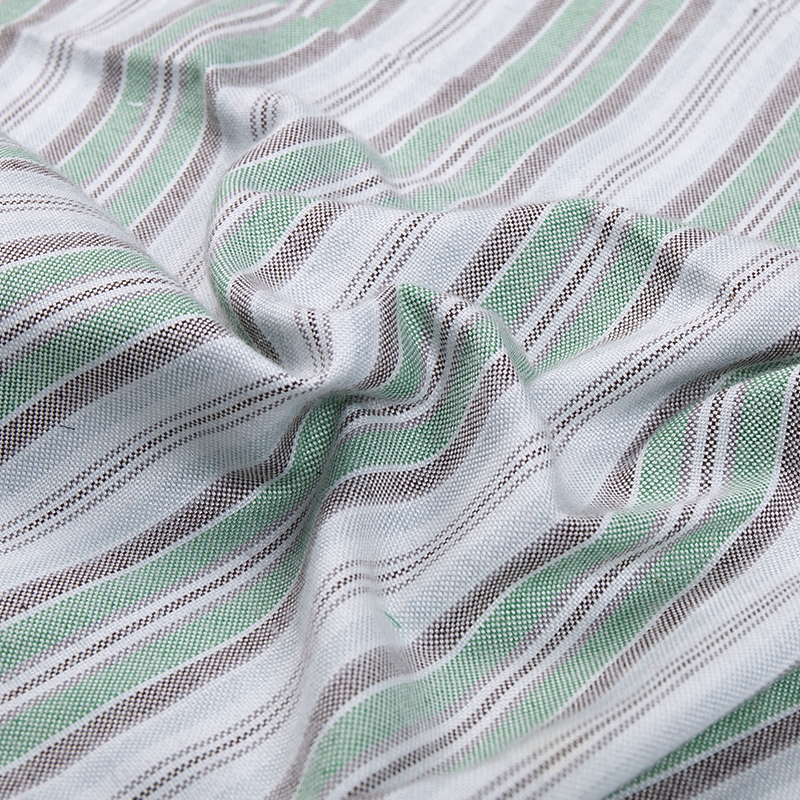Yarn-dyed blended fabrics represent a significant innovation in the textile industry, offering a multitude of commercial advantages for manufacturers and retailers. These fabrics, which combine various fibers—often synthetic with natural materials—undergo a unique dyeing process where the yarns are dyed before weaving. This results in vibrant colors that are deeply embedded in the fabric, enhancing colorfastness and providing a rich aesthetic appeal that is often superior to piece-dyed alternatives. For manufacturers, the ability to create intricate patterns and designs using this dyeing technique opens up a world of creative possibilities, allowing for differentiated products that can stand out in a competitive marketplace.
One of the key commercial advantages of yarn-dyed blended fabrics is their durability and resistance to shrinkage and wrinkles. This is particularly appealing to retailers, as garments made from these fabrics require less frequent replacement and maintenance, translating into higher customer satisfaction and loyalty. Fabrics such as polyester-cotton blends maintain size stability, making them ideal for mass production where consistency is critical. Additionally, the blended nature of these fabrics enhances their overall performance, offering qualities like wear resistance and ease of care. This means that retailers can confidently market these products as long-lasting and low-maintenance, appealing to the modern consumer's desire for convenience.

Moreover, the blending of fibers allows for the combination of desirable traits from both natural and synthetic materials. For instance, blending cotton with polyester can yield a fabric that boasts the breathability and comfort of cotton while also benefiting from the strength and wrinkle resistance of polyester. This versatility not only broadens the range of applications—from casual wear to formal attire—but also enables manufacturers to target diverse market segments effectively. As fashion trends shift towards sustainability and functionality, yarn-dyed blended fabrics position themselves as an attractive option, catering to both environmentally conscious consumers and those seeking performance-driven apparel.
The historical context of yarn dyeing also adds a layer of value to these fabrics. Traditionally associated with artisanal craftsmanship, the resurgence of interest in handmade and high-quality textiles has elevated the status of yarn-dyed products. Retailers can leverage this narrative to connect with consumers on a deeper level, promoting the unique heritage and artistry behind their offerings. Additionally, the trend towards personalization and unique designs aligns perfectly with the capabilities of yarn-dyed blended fabrics, allowing brands to create limited-edition collections that resonate with consumers seeking individuality.
The commercial advantages of Yarn-dyed blended fabrics for manufacturers and retailers are manifold. From enhanced durability and aesthetic appeal to the ability to cater to diverse consumer preferences, these fabrics represent a strategic asset in a dynamic marketplace. As the demand for quality, sustainability, and functionality continues to grow, yarn-dyed blended fabrics are poised to play an increasingly important role in shaping the future of textile manufacturing and retail.



 English
English Español
Español Sep 30,2024
Sep 30,2024














 +86-519-86503571
+86-519-86503571
 Phone: +86-13218666905
Phone: +86-13218666905 Tel: +86-0519-86503571
Tel: +86-0519-86503571 Fax: +86-0519-86508551
Fax: +86-0519-86508551 E-mail: tammy@czchfz.com
E-mail: tammy@czchfz.com